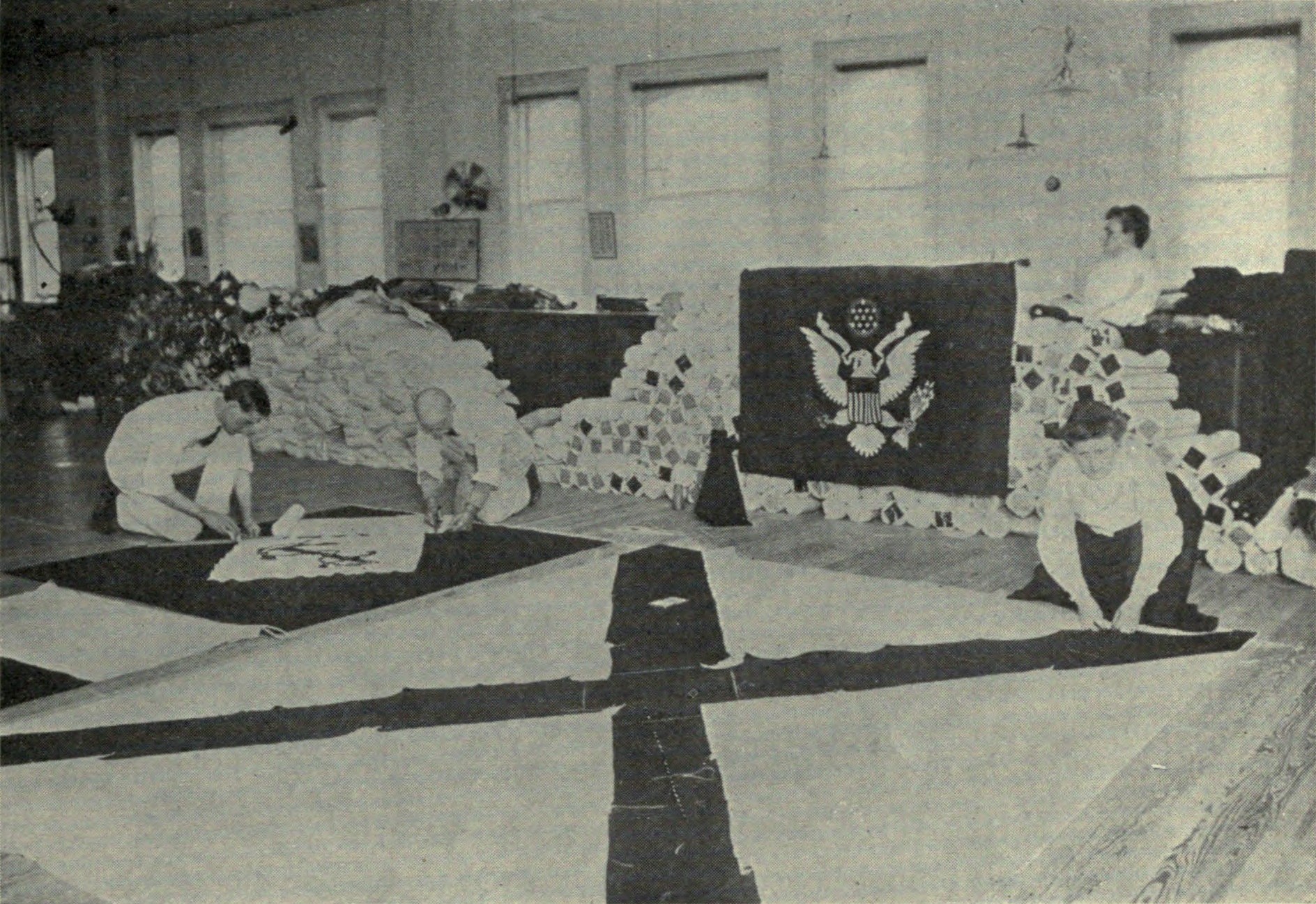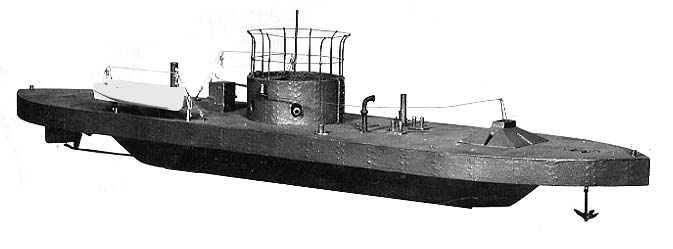|
USS Spuyten Duyvil (1864)
During the American Civil War, the Union Navy suffered heavy losses from the explosion of Confederate torpedoes. This experience prompted the Union Navy to design and build vessels capable of using this new weapon. One effort along this line resulted in a screw steam torpedo boat originally called ''Stromboli'', but later called ''Spuyten Duyvil'', after the Spuyten Duyvil area in New York City. History ''Stromboli'' was designed by the Chief Engineer of the United States Navy, Captain William W. Wood, who supervised her construction at New Haven, CT, by Samuel M. Pook. The contract for her construction was dated 1 June 1864. Confirmed records of her launching and commissioning have not been found – though period records indicate that she was completed in only three months. On 19 November 1864, the boat was renamed ''Spuyten Duyvil''. On 25 November 1864, she successfully fired two torpedoes. Late in November 1864, Commodore Charles Stewart Boggs was placed in charge of ... [...More Info...] [...Related Items...] OR: [Wikipedia] [Google] [Baidu] |
Ulysses S
Ulysses is one form of the Roman name for Odysseus, a hero in ancient Greek literature. Ulysses may also refer to: People * Ulysses (given name), including a list of people with this name Places in the United States * Ulysses, Kansas * Ulysses, Kentucky * Ulysses, Nebraska * Ulysses Township, Butler County, Nebraska * Ulysses, New York * Ulysses, Pennsylvania * Ulysses Township, Potter County, Pennsylvania Arts and entertainment Literature * "Ulysses" (poem), by Alfred Lord Tennyson * ''Ulysses'' (play), a 1705 play by Nicholas Rowe * ''Ulysses'', a 1902 play by Stephen Phillips * ''Ulysses'' (novel), by James Joyce * ''HMS Ulysses'' (novel), by Alistair Maclean * Ulysses (comics), two members of a fictional group in the Marvel Comics universe * Ulysses Klaue, a character in Marvel comic books * Ulysses: Jeanne d'Arc and the Alchemist Knight, a light novel Film and television * ''Ulysses'' (1954 film), starring Kirk Douglas based on the story of Homer's ''Odysse ... [...More Info...] [...Related Items...] OR: [Wikipedia] [Google] [Baidu] |
Torpedo
A modern torpedo is an underwater ranged weapon launched above or below the water surface, self-propelled towards a target, and with an explosive warhead designed to detonate either on contact with or in proximity to the target. Historically, such a device was called an automotive, automobile, locomotive, or fish torpedo; colloquially a ''fish''. The term ''torpedo'' originally applied to a variety of devices, most of which would today be called mines. From about 1900, ''torpedo'' has been used strictly to designate a self-propelled underwater explosive device. While the 19th-century battleship had evolved primarily with a view to engagements between armored warships with large-caliber guns, the invention and refinement of torpedoes from the 1860s onwards allowed small torpedo boats and other lighter surface vessels, submarines/submersibles, even improvised fishing boats or frogmen, and later light aircraft, to destroy large ships without the need of large guns, though ... [...More Info...] [...Related Items...] OR: [Wikipedia] [Google] [Baidu] |
Naval Mine
A naval mine is a self-contained explosive device placed in water to damage or destroy surface ships or submarines. Unlike depth charges, mines are deposited and left to wait until they are triggered by the approach of, or contact with, any vessel or a particular vessel type, akin to anti-infantry vs. anti-vehicle mines. Naval mines can be used offensively, to hamper enemy shipping movements or lock vessels into a harbour; or defensively, to protect friendly vessels and create "safe" zones. Mines allow the minelaying force commander to concentrate warships or defensive assets in mine-free areas giving the adversary three choices: undertake an expensive and time-consuming minesweeping effort, accept the casualties of challenging the minefield, or use the unmined waters where the greatest concentration of enemy firepower will be encountered. Although international law requires signatory nations to declare mined areas, precise locations remain secret; and non-complying individuals ... [...More Info...] [...Related Items...] OR: [Wikipedia] [Google] [Baidu] |
New York Navy Yard
The Brooklyn Navy Yard (originally known as the New York Navy Yard) is a shipyard and industrial complex located in northwest Brooklyn in New York City, New York. The Navy Yard is located on the East River in Wallabout Bay, a semicircular bend of the river across from Corlears Hook in Manhattan. It is bounded by Navy Street to the west, Flushing Avenue to the south, Kent Avenue to the east, and the East River on the north. The site, which covers , is listed on the National Register of Historic Places. The Brooklyn Navy Yard was established in 1801. From the early 1810s through the 1960s, it was an active shipyard for the United States Navy, and was also known as the United States Naval Shipyard, Brooklyn and New York Naval Shipyard at various points in its history. The Brooklyn Navy Yard produced wooden ships for the U.S. Navy through the 1870s, and steel ships after the American Civil War in the 1860s. The Brooklyn Navy Yard has been expanded several times, and at its peak, ... [...More Info...] [...Related Items...] OR: [Wikipedia] [Google] [Baidu] |
Flagship
A flagship is a vessel used by the commanding officer of a group of naval ships, characteristically a flag officer entitled by custom to fly a distinguishing flag. Used more loosely, it is the lead ship in a fleet of vessels, typically the first, largest, fastest, most heavily armed, or best known. Over the years, the term "flagship" has become a metaphor used in industries such as broadcasting, automobiles, education, technology, airlines, and retail to refer to their highest profile or most expensive products and locations. Naval use In common naval use, the term ''flagship'' is fundamentally a temporary designation; the flagship is wherever the admiral's flag is being flown. However, admirals have always needed additional facilities, including a meeting room large enough to hold all the captains of the fleet and a place for the admiral's staff to make plans and draw up orders. Historically, only larger ships could accommodate such requirements. The term was also used b ... [...More Info...] [...Related Items...] OR: [Wikipedia] [Google] [Baidu] |
David Dixon Porter
David Dixon Porter (June 8, 1813 – February 13, 1891) was a United States Navy admiral and a member of one of the most distinguished families in the history of the U.S. Navy. Promoted as the second U.S. Navy officer ever to attain the rank of admiral, after his adoptive brother David G. Farragut, Porter helped improve the Navy as the Superintendent of the U.S. Naval Academy after significant service in the American Civil War. Porter began naval service as a midshipman at the age of 10 years under his father, Commodore David Porter, on the frigate . For the remainder of his life, he was associated with the sea. Porter served in the Mexican War in the attack on the fort at the City of Vera Cruz. At the outbreak of the Civil War, he was part of a plan to hold Fort Pickens, near Pensacola, Florida, for the Union; its execution disrupted the effort to relieve the garrison at Fort Sumter, leading to Sumter's fall. Porter commanded an independent flotilla of mortar boats at the ... [...More Info...] [...Related Items...] OR: [Wikipedia] [Google] [Baidu] |
Abraham Lincoln
Abraham Lincoln ( ; February 12, 1809 – April 15, 1865) was an American lawyer, politician, and statesman who served as the 16th president of the United States from 1861 until his assassination in 1865. Lincoln led the nation through the American Civil War and succeeded in preserving the Union, abolishing slavery, bolstering the federal government, and modernizing the U.S. economy. Lincoln was born into poverty in a log cabin in Kentucky and was raised on the frontier, primarily in Indiana. He was self-educated and became a lawyer, Whig Party leader, Illinois state legislator, and U.S. Congressman from Illinois. In 1849, he returned to his successful law practice in central Illinois. In 1854, he was angered by the Kansas–Nebraska Act, which opened the territories to slavery, and he re-entered politics. He soon became a leader of the new Republican Party. He reached a national audience in the 1858 Senate campaign debates against Stephen A. Douglas. L ... [...More Info...] [...Related Items...] OR: [Wikipedia] [Google] [Baidu] |
Robert E
The name Robert is an ancient Germanic given name, from Proto-Germanic "fame" and "bright" (''Hrōþiberhtaz''). Compare Old Dutch ''Robrecht'' and Old High German ''Hrodebert'' (a compound of '' Hruod'' ( non, Hróðr) "fame, glory, honour, praise, renown" and '' berht'' "bright, light, shining"). It is the second most frequently used given name of ancient Germanic origin. It is also in use as a surname. Another commonly used form of the name is Rupert. After becoming widely used in Continental Europe it entered England in its Old French form ''Robert'', where an Old English cognate form (''Hrēodbēorht'', ''Hrodberht'', ''Hrēodbēorð'', ''Hrœdbœrð'', ''Hrœdberð'', ''Hrōðberχtŕ'') had existed before the Norman Conquest. The feminine version is Roberta. The Italian, Portuguese, and Spanish form is Roberto. Robert is also a common name in many Germanic languages, including English, German, Dutch, Norwegian, Swedish, Scots, Danish, and Icelandic. It c ... [...More Info...] [...Related Items...] OR: [Wikipedia] [Google] [Baidu] |
Monitor Warship Type
A monitor is a relatively small warship which is neither fast nor strongly armored but carries disproportionately large guns. They were used by some navies from the 1860s, during the First World War and with limited use in the Second World War. The original monitor was designed in 1861 by John Ericsson, who named it . They were designed for shallow waters and served as coastal ships. The term also encompassed more flexible breastwork monitors, and was sometimes used as a generic term for any turreted ship. In the early 20th century, the term was revived for shallow-draught armoured shore bombardment vessels, particularly those of the Royal Navy: the s carried guns firing heavier shells than any other warship ever has, seeing action (albeit briefly) against German targets during World War I. The ''Lord Clive'' vessels were scrapped in the 1920s. The term "monitor" also encompasses the strongest of riverine warcraft, known as river monitors. During the Vietnam War these much sm ... [...More Info...] [...Related Items...] OR: [Wikipedia] [Google] [Baidu] |






